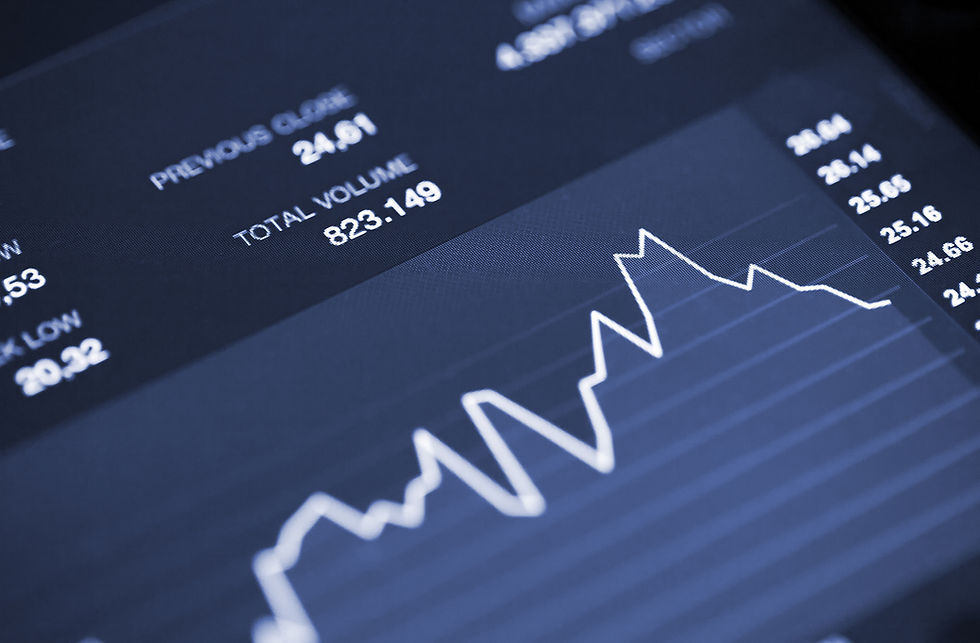Why Timing The Market Is Tough
- Democrafy
- Nov 24, 2022
- 3 min read

Look at a chart of the stock market and you will see prices moving up over time, but with bumps along the way. Imagine if you knew when to time the market – when to sell at the expensive top, and when to buy back cheaply at the bottom.
It’s an enticing thought. If only it were that easy - for most of us, timing the market is a financially disastrous mistake, as we will come to see. This piece will show you why it’s so hard to time the markets and why, by trying, you’ll end up with a worse result than if you'd never tried.
******************************
Donald Trump
It was early November 2016 and the world was watching the US Presidential election with bated breath. Financial markets feared a Donald Trump victory, believing his policies to be unpredictable and destabilising for American companies. As the result came through on the morning of November 9th, it became clear that the ‘impossible’ would happen – a Trump Presidency.
But over the next few days and weeks, financial markets performed exceptionally well. The fear of Trump was replaced with a realisation that he would be pro-business and would cut taxes, stimulating years of economic growth. The consensus was wrong.
This story shows the difficulty of market timing. Even if you predicted the surprise Trump victory, chances are that you would sold your financial assets, expecting their price to fall. To successfully time the market, you need to correctly guess not only the outcome, but also the market response to that outcome; this is what makes it so difficult.
Prices are determined by buyers and sellers in the market, but the complexity lies in the different natures of those market participants. Some are highly short-term, holding stocks for hours at a time. Others will own stocks for years without selling. And some market participants are just computer programmes, buying and selling in response to complex signals from other algorithms.
With this complexity, it’s almost impossible to correctly identify the top and the bottom of the market - to buy and sell at the right time.
******************************
What If You're Wrong
The prize of correctly timing the market is clear – you sell everything at peak valuation and buy back at rock-bottom. That’s easy to say when looking back at a historical chart. It’s much harder to do in practice when emotions come into play.
It’s impossible to correctly pick the exact top and bottom of the market, so picture the following situation. Imagine you have sold all your financial assets, believing we are at the top of the market. And yet over the course of the following weeks and months, the market continues to go higher. What do you do?

You can’t sell at the top of the market, because you’ve already sold for a lower price. And you don’t want to buy because you’ll be paying a higher price than the one at which you sold. You’re stuck in an emotional trap.
Eventually the price does fall, but because it’s still above the price at which you sold, you decide not to buy back your assets. You wait.
But in your waiting time, the market recovers again and sets off towards new highs. You have been out of the market, and it’s unclear when to come back in.
This is a common problem with market timing. It's hard enough to sell at the right time, but then you have to buy back at the right time too...
******************************
A Better & Easier Way
Rather than timing the market, it’s better (and easier) to focus on time in the market. It’s how long you allow compounding to take its effect that determines how much money you make in the long-term. Attempts at market timing are at best a distraction, and at worst an enormous financial trap.
Because of the number of different market participants, the complex interaction between them causes stock market movements to be random in the short-term. As the famous investor Ben Graham said, ‘in the short-run the stock market behaves like a voting machine, but in the long-term it acts like a weighing machine.’ In other words, true value is only revealed over time – the short-run can be random and confusing.
So next time your friends tell you now is a great or terrible time to invest, ignore them. They have no idea what they’re talking about. It’s hard enough for the economists, why is it any different for you?
Save yourself the stress and invest for the long-term. Don’t buy and sell – buy and hold. Timing the market is tempting, but it’s a fool’s game with a fool’s results.



Comments